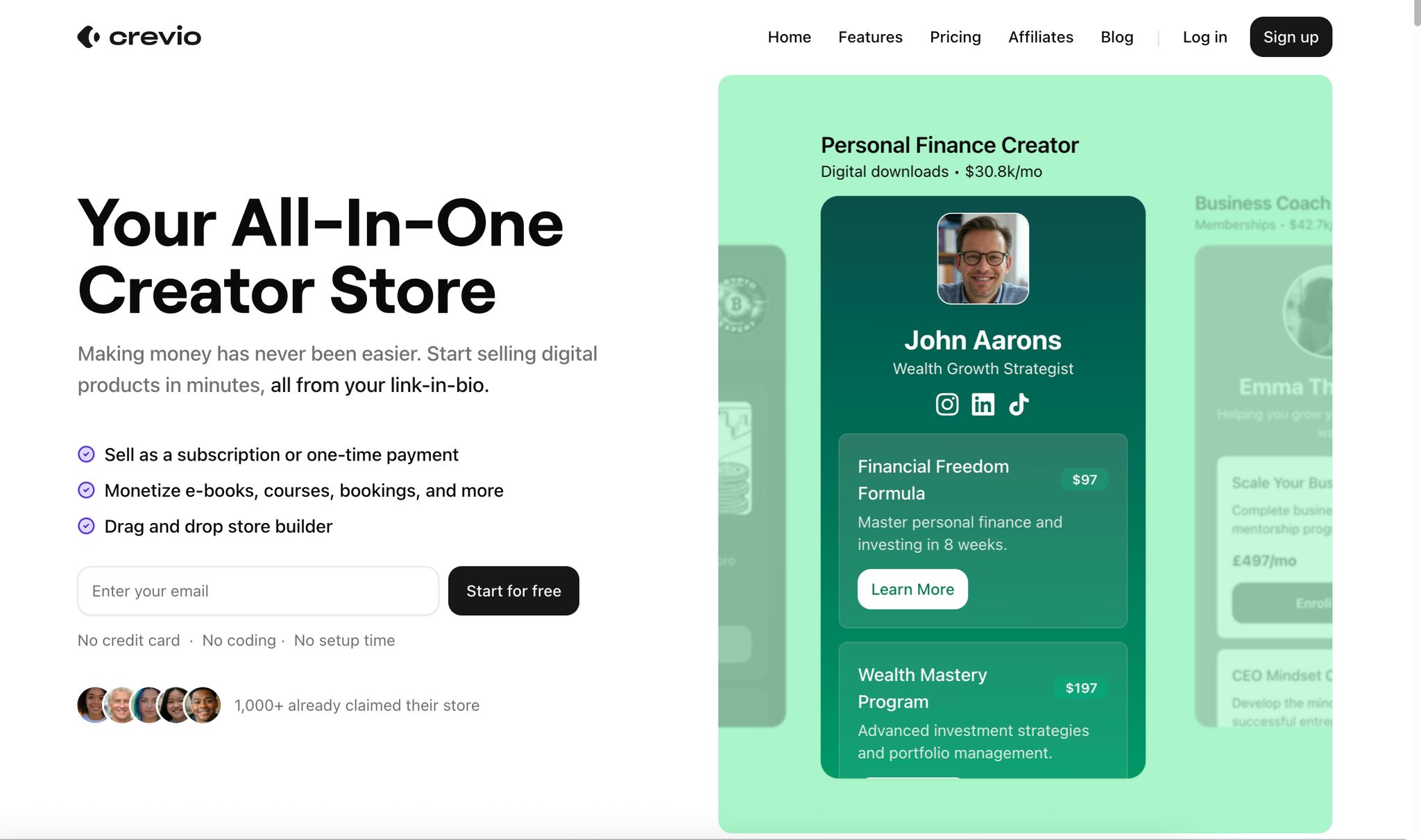How To Create Digital Products

Want to earn online without worrying about inventory or shipping? Digital products are your answer. They’re non-physical items like eBooks, online courses, templates, or software that you can sell repeatedly with minimal effort. Here’s what you need to know:
- Why Create Digital Products?
- No inventory or shipping costs.
- Instant delivery to buyers.
- High profit margins and scalability.
- Reach a global audience.
- Top-Selling Ideas:
- eBooks: A $14.7 billion market (2023).
- Online courses: Part of the $840 billion education market by 2030.
- Templates, digital art, software, and more.
- Who Can Benefit?
- Experts, content creators, educators, freelancers, and artists.
- How to Start:
- Identify your skills and check market demand.
- Research customer needs using tools like surveys or online forums.
- Test your idea with a prototype before launching.
With digital products, you can turn your knowledge into income while reaching customers worldwide. Ready to start? Let’s dive in.
Finding Product Ideas That Sell
Creating successful digital products starts with understanding what the market needs. Here’s how you can discover ideas that connect with your audience.
Selecting Your Focus Area
Start by evaluating your own skills and matching them with market opportunities. The best digital products often come from creators who know their field inside and out.
Here’s a simple approach:
- Identify your expertise: Make a list of your professional skills, hobbies, or areas where people often ask for your advice.
- Check market interest: Research to see if there’s demand for your idea.
- Review the competition: Look for gaps in what’s already available and think about how you can bring a fresh perspective.
"It’s tempting to come up with a digital product idea first and then work out how to sell it and who to sell it to later. But if you do this, you might find yourself wasting time on products that aren’t actually solving any real problems people are willing to pay money for and you may have no potential customers to even sell to." – Ivory Mix
Researching Customer Needs
To create products people want to buy, you need to understand their challenges. Successful creators rely on several methods to uncover these insights:
Market Research Tools:
- Use platforms like AnswerThePublic to find common questions in your niche.
- Pay attention to discussions and comments on social media.
- Conduct surveys or polls to gather direct feedback.
- Check frequently asked questions in online communities.
These steps can help you spot trends and identify products that are already performing well.
Top-Selling Digital Products
Certain categories of digital products consistently generate strong sales. Here’s a snapshot of some top performers:
| Product Type | Average Price | Monthly Sales | Monthly Revenue |
|---|---|---|---|
| Life Planner Templates | $15.00 | 94 | $1,500 |
| Educational Printables | $11.67 | 66 | $772 |
| Instagram Templates | $13.93 | 78 | $1,086 |
| Budgeting Spreadsheets | $11.23 | 62 | $696 |
| Digital Portraits | $4.95 | 466 | $236 |
Current Market Trends:
The demand for digital products is growing in areas like:
- Actionable solutions: Buyers love products that help them achieve quick results.
- Simple, targeted offerings: Items that solve a specific problem are highly appealing.
- Affordable starter products: Introductory items priced between $7 and $27 are great for building trust.
- Specialized templates: Tools that streamline business processes are in high demand.
- Learning materials: Products like printables and online courses remain popular.
For example, a holiday-themed mug mockup bundle priced at $2.99 sold 2,196 units in just seven months, proving that affordable, niche products can be incredibly successful.
Start by focusing on one category, prioritize quality, and deliver consistent value before expanding your product line.
Creating Your Digital Product
Now that you’ve nailed down your idea, it’s time to design and refine your digital product. Let’s turn your concept into something tangible.
Product Structure and Layout
Organize your content in a way that’s easy to navigate and logical for users. A clear structure helps guide your audience through your product effortlessly.
For products like courses or eBooks, here’s a helpful framework:
| Section | Purpose | Key Elements |
|---|---|---|
| Introduction | Set expectations | Problem statement, outcomes, prerequisites |
| Core Content | Deliver main value | Step-by-step instructions, examples, worksheets |
| Implementation | Enable action | Templates, checklists, resource lists |
| Support | Help users succeed | FAQs, troubleshooting guides, contact info |
"Develop the Minimum Viable Product (MVP), that which has the highest return-on-investment versus risk. It’s the product that’s ‘big enough’ to sell in volume, with good margins, but not so big as to have exponentially increasing risk and investment with each new feature." – Frank Robinson, CEO of SyncDev, Inc.
Production Tools and Software
Pick tools that fit your product type and skill set. Here are some suggestions:
- Visual Content Creation: Canva is great for creating graphics, templates, and presentations. Use features like Magic Write to streamline your workflow.
- Course Development:
- Record high-quality video content.
- Create workbooks and other materials.
- Break content into structured modules.
- Document Production:
- Use tools like Microsoft Word or Google Docs for eBooks, templates, or printables.
- Ensure consistent branding throughout.
- Add interactive elements for a better user experience.
Product Testing
Testing is crucial – 75% of launches fail in their first year. Here’s how to test effectively:
- Recruit a test group to evaluate the interface, content, and functionality. Gather their feedback and make adjustments.
- Focus on key areas:
- User interface and navigation
- Content clarity and completeness
- Technical functionality
- Overall value provided
- Refine your product based on the feedback you receive.
Since 80% of issues are tied to user interface problems, pay special attention to navigation and ease of use. Testing can have a big impact – one company’s testing efforts led to a 34% boost in deliverability and noticeable revenue growth.
These steps will help you prepare your product for smooth sales and delivery.
Setting Up Sales and Delivery
Using Crevio for Sales
 Create your digital store on Crevio with ease using its mobile-friendly, drag-and-drop builder. Here’s what you can expect:
Create your digital store on Crevio with ease using its mobile-friendly, drag-and-drop builder. Here’s what you can expect:
| Store Feature | Purpose | How to Set It Up |
|---|---|---|
| Custom Branding | Keep your branding consistent | Add your logo, pick your color scheme, and use a custom domain (available on the Growth plan). |
| Product Display | Highlight your products | Use the mobile-optimized layout and include detailed product descriptions. |
| Payment Processing | Simplify transactions | Accept payments through Stripe without platform fees*. |
| Access Control | Flexible payment options | Offer one-time purchases or recurring subscriptions to suit your business model. |
*Note: Standard Stripe fees may still apply.
Setting Product Prices
Choose pricing that reflects your product’s value and meets your audience’s needs. Crevio supports both one-time payments and subscriptions, giving you the flexibility to align your pricing with your business strategy. Once pricing is set, Crevio’s automated system ensures smooth and hassle-free delivery.
Customer Delivery System
Delivery is made simple with Crevio’s automated system, which provides secure, instant access to your digital products. It also manages access control and keeps customer data organized for better audience management.
Product Launch and Marketing
Growing Your Audience
Did you know email marketing brings in about $42 for every $1 spent? To make the most of this, start by crafting lead magnets that solve your audience’s problems. These could be guides, templates, or other resources that grab attention.
Set up a pre-launch landing page to collect email addresses and test your product idea. Make sure to include:
- A clear value proposition that explains why your product matters
- A sneak peek at product benefits to spark interest
- Early-bird offers to encourage sign-ups
- A sign-up form to keep potential buyers in the loop
This approach not only builds excitement but also sets the stage for your full marketing campaign. For example, Storylane‘s DemoHub feature launch drew over 700 company sign-ups and boosted brand name searches by 33%, thanks to strategic content and interactive demos.
Marketing Methods
A multi-channel strategy is key to reaching your customers. Here are some proven methods for marketing digital products:
| Marketing Channel | Benefits | Metrics to Watch |
|---|---|---|
| Blog Content | Helps generate 67% more leads | SEO rankings, organic traffic |
| Social Media | A go-to for 59% of Gen Z discovering products | Engagement, click-through rates |
| Email Marketing | The top choice for 73% of consumers | Open rates, conversions |
| Online Summits | Positions you as an expert | Attendee sign-ups, upselling success |
Want to take it further? Try hosting online challenges. Web designer John D Saunders used Twitter to announce his course, earning over 30 retweets and 200 likes. This buzz helped him rake in $10,000 in sales on launch day.
Sales Performance Analysis
Once your product is live, tracking performance is essential to fine-tune your marketing. Keep an eye on these metrics:
- Traffic Sources – Find out which channels bring in the most qualified leads.
- Conversion Rates – Track how many visitors turn into paying customers.
- Customer Feedback – Use reviews and testimonials to build trust. In fact, 72% of consumers say testimonials make them trust a business more.
Tools like Crevio’s analytics and Google Analytics can help you monitor user behavior and improve your strategy over time.
Next Steps
Quick Guide Review
Start by understanding your audience’s challenges. For instance, founder Darshan Somahekar discovered a strong demand for a digital version of Spider Solitaire by surveying his audience.
Here’s a simple process to follow:
- Define Your Target Market: Use focused surveys to identify what your audience needs.
- Test Product Ideas: Share 3-5 concepts with potential customers to gauge interest.
- Develop a Prototype: Build a basic version of your product and gather feedback from beta testers.
- Launch and Monitor: Roll out your product, track key metrics, and make adjustments based on the data.
These steps help lay the groundwork for developing and launching your digital product.
Getting Started
Building on this, here’s a practical framework to guide your product journey. Digital marketing manager Mehdi Hussen from SalesHandy highlights an important point:
"In any business, profits are earned by keeping costs consistently lower than revenue. However, it is not possible to keep the costs always lower. Inflation, product improvements, and several other factors will drive up cost no matter how hard the business tries to curb it. Winning the cost game is a constant battle. But, it is always possible to earn more revenue by offering better products."
Use this structure to organize your efforts across research, development, and launch phases:
| Phase | Key Actions | Success Metrics |
|---|---|---|
| Research | Send surveys and analyze audience feedback | Response rate, clarity of issues |
| Development | Build a prototype and collect beta tester input | Completion rate, user satisfaction |
| Launch | Set up a sales platform and track key metrics | Conversion rate, revenue |
Digital products often start small and improve over time. Tools like Google Analytics can help you monitor user behavior and gather insights to fine-tune your product. This approach ensures your product aligns with what your customers truly need.






